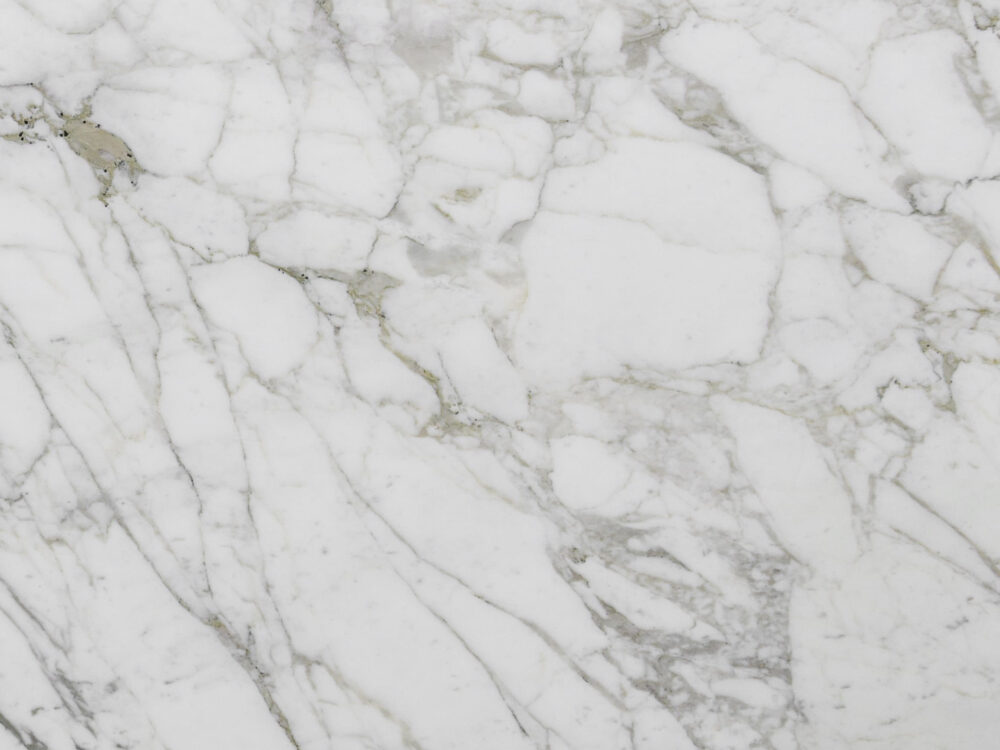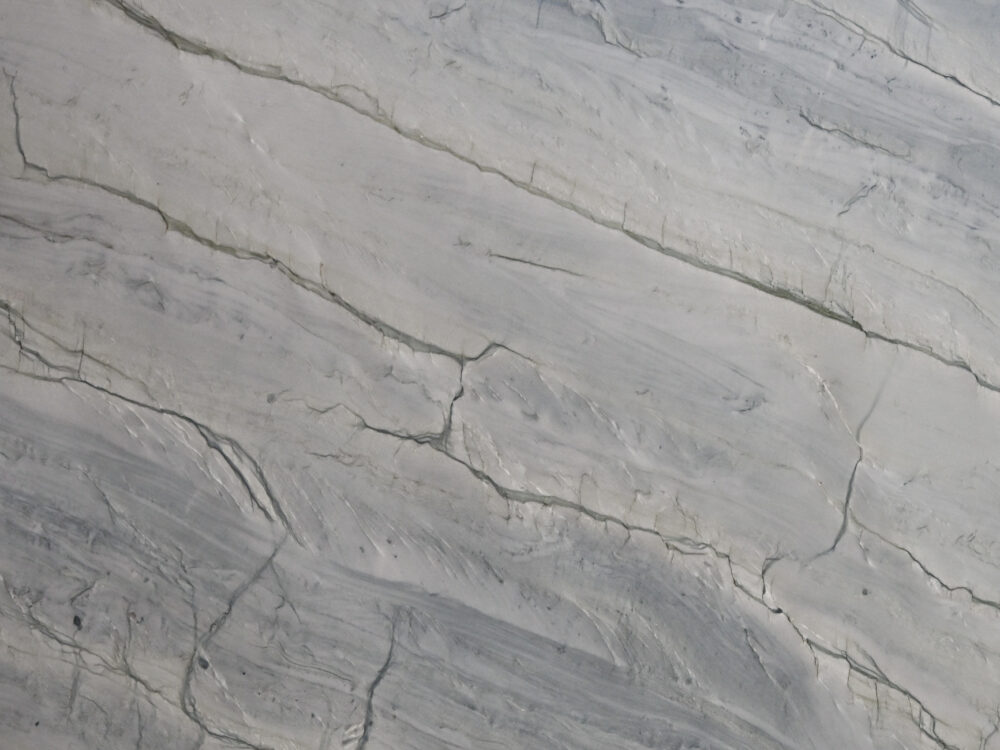Stone kitchen Benchtops
Natural Stone Kitchen Benchtops
Transform your Sydney kitchen with premium stone benchtops that last a lifetime. Natural stone brings unmatched beauty, exceptional durability, and genuine character to your home—each slab unique, formed over millions of years. From classic marble elegance to granite’s indestructible strength, our handpicked collection offers stone to suit every Sydney kitchen style and lifestyle. With over 20 years of experience, Avant Stone guides you through selection, helping you choose stone that looks stunning and actually works for how you live.
Different Types of Natural Stone Benchtops
Not all natural stone is created equal. Understanding the unique characteristics of each stone type helps you choose kitchen benchtops that match both your aesthetic vision and practical needs in Sydney homes.
-
Calacatta Oro Marble
Calacatta Oro Marble is among the most sought-after marbles in the world. This Marble is quarried in the Carrara mountain ranges of central Italy. The pristine white background of this marble is contrasted with the bold warm grey veining. Calacatta Oro is one of the classic Italian white Marble, having been used on high-end luxury developments for centuries. The timeless nature of the color palette & magnificence of this stone leaves it as one of the most prized marbles in the Avant Stone range.
-
Calacatta Vagli Marble
Calacatta Vagli Marble is a luxurious natural stone sourced from the Carrara Mountain ranges of Italy. Characterised by its warm white background and soft earthy-gold veining, this marble brings timeless Italian elegance to any space.
What sets Calacatta Vagli apart is its distinctive brecciated pattern — fragmented and artistic, almost like nature’s own brushwork. This versatility makes it equally stunning in large format applications such as kitchen islands and feature walls, or in smaller segments like shower niches and fireplace hearths.
The warm gold undertones pair beautifully with timber cabinetry, brass fixtures, and natural materials, making it a favourite among Sydney interior designers seeking sophistication without coldness.
- Finish: Honed
- Origin: Carrara, Italy
- Best for: Kitchen benchtops, feature walls, bathroom vanities, fireplace surrounds
Like all marble, Calacatta Vagli requires regular sealing and prompt spill cleanup to maintain its beauty.
Visit our Sydney or Newcastle showroom to see available Calacatta Vagli slabs in person.
-
Verde Alpi Marble
Verde Alpi Marble is a luxurious emerald green stone sourced from Italian quarries, featuring rich hues of white and dark green throughout. A long-time favourite among interior designers, this marble brings unmatched opulence and vibrancy to any application.
The captivating colours and brecciated veining create a mesmerising effect — like an aerial view of a swirling ocean. Each slab is a natural work of art, with patterns that shift and flow in ways no engineered material can replicate.
Verde Alpi is a statement stone. It demands attention and transforms ordinary spaces into extraordinary ones. Whether used as a feature wall, kitchen island, or bathroom vanity, this marble becomes the centrepiece of any room.
Origin: Italy
Colour Palette: Emerald green, white, dark green
Pattern: Brecciated (fragmented, artistic movement)
Best for: Feature walls, statement benchtops, bathroom vanities, fireplace surrounds, luxury commercial fitouts
As with all marble, Verde Alpi requires regular sealing and careful maintenance. Avoid acidic substances and wipe spills promptly to preserve its stunning finish.
-
Rosa Noir Marble
Featuring a sophisticated blend of soft pink hues, bold black brecciated veining, and subtle green accents, Rosa Noir is a striking natural stone. Its captivating contrast and nuanced color palette make it ideal for luxurious countertops, flooring, and accent walls, adding a touch of timeless elegance to any space.
-
Indian Jet Black Granite
Indian Jet Black Granite is the ultimate expression of sleek, modern elegance. This deep, pitch-black stone delivers a magnificent polished surface that gleams like a mirror, reflecting light and creating a sense of understated luxury in any space. It’s a timelessly classic granite that will never look anything less than stunning.
What makes Indian Jet Black exceptional is its consistency. Unlike many natural stones with variable patterning, this granite offers a uniform, deep black colour that provides a sophisticated backdrop for any design scheme. The polished surface emanates brilliance and sumptuousness, particularly striking when illuminated by natural light.
Black is the most versatile colour in interior design, and Indian Jet Black proves this beautifully. It blends seamlessly with virtually any colour palette, creating dramatic contrast against white or light-coloured cabinetry, or complementing timber and stainless steel for a classy, contemporary aesthetic.
-
Titanium Granite
Titanium Granite is a striking dark Granite with strong movement and patterning. Titanium Granite is known for its irregular sized white and gold crystallisations throughout the stone against an intense black background. Titanium Granite is bursting with elegant movement and will most definitely make a statement in any chosen space. Titanium Granite is stylish and durable, making it the perfect natural stone for exterior and interior applications.
Read More
If you want to give your kitchen or bathroom a vivid, elegant, or modern look, Titanium Granite Slabs could be just what you’re searching for. This stone naturally resembles the Galaxy but with milky white and gold moving throughout the stone, like satin against an intense black piece. The application of Titanium Granite is unrivaled.
Most homeowners are unaware that the benchtops they choose may make or break the overall appearance of the space. The choice of your benchtops has a significant impact on the value and usefulness of your kitchen or bathroom. This stone has long been a popular choice for countertops, but it’s also used in various other applications.
Flooring
Black flooring gives every room a sense of depth and intensity. Titanium Granite tiles or slabs on the flooring will enhance the aesthetics while providing the area a traditional appeal. Stone specialists recommend Black Granite Floor Tiles for spaces with lots of natural light.Accent Walls
Without any effort, just using Titanium Granite on accent walls may give even the most basic home décor a wow factor. This stone can be utilized as a feature wall in bathrooms or behind a shower or a bathtub. It may also be used as a backdrop for walls in living rooms or kitchens.Outdoor Cladding
Titanium Granite will be a unique choice for wall cladding because it catches the light and reflects it brilliantly. It’s also a better choice than other stones since it can withstand sunshine, dust, and water without losing its quality or appearance.Why Choose Titanium Granite?
The flexibility of Granite is one of the significant reasons for its popularity. In addition, titanium Granite Countertops may help homeowners establish various interior design themes by tying the whole appearance of their kitchen or bathroom together. So, whether you’re going for a modern look, a more traditional look, or even a vintage look for these areas, the gorgeous aesthetic of Titanium Granite Benchtops is sure to match with whichever designs you have in mind.Besides the versatility of Titanium Granite, the stone is a magnificent choice for high-traffic applications such as kitchens. They’re tough, long-lasting, and resistant. Granite is produced as an igneous rock under tremendous temperatures and pressure, resulting in an extremely durable material, heat and fire-resistant.
One more advantage of Black Granite Countertops is that they don’t require much cleaning as lighter-toned table top materials. As you might expect, the surface does an excellent job of concealing darker stains. Without a doubt, this makes Black Granite the ideal benchtop material for homeowners seeking a long-lasting and profitable investment to enhance their space’s aesthetic appeal, practicality, and it’s a lot easier to keep up with.For these three reasons and more, Titanium Granite Countertops are a classic choice for your kitchen or bathroom. First, they’re made of natural stone, which is a very trendy feature among new homeowners these days. It is due to the material’s inherent beauty and distinctive appearance and its unrivaled strength and longevity. Second, black is a timeless color that will never go out of style, regardless of the trends that come and go throughout the years. So go ahead and contact us, Avant Stone, to buy this gorgeous stone.
-
Copacabana Granite
Copacabana Granite is a captivating natural stone that features thick black vein swirls against an ivory background, creating a busy yet visually stunning pattern. Its distinctive aesthetic adds drama, energy, and a sense of dynamism to any interior space. Despite its busy appearance, Copacabana Granite maintains a natural allure, making it a versatile choice for interior designs that seek to make a bold and captivating statement
-
Colonial White Granite
Colonial White Granite is a beautiful speckled natural stone. Characterised by its cream, white and burgundy spots, Colonial White is consistent with a subtle amount of character. The natural stone combines beautifully with different finishes, materials, and colour palettes. Offering seamless blends with lighter colours and an alluring contrast with darker colours..
-
Fusion Quartzite
Fusion Quartzite is distinguished by its rich color palette and intricate patterns, exemplifying nature’s artistry. Deep grey hues are interwoven with accents of gold, beige, and olive, creating a dynamic and captivating visual effect. Its unique and versatile design makes Fusion an exceptional choice for adding sophistication and character to any space.
-
Taj Mahal Quartzite
Taj Mahal Quartzite is a stunning natural stone, perfect for those who want to add an elegant and sophisticated touch to their spaces. With its distinctive beige backdrop and gentle veins of grey and orange, it mimics the look of marble while offering the durability of quartzite. Ideal for countertops, backsplashes, and floors, it’s a versatile choice that combines beauty and functionality.
Key Benefits of Taj Mahal Quartzite
- Durable: Scratch and heat resistant, ideal for high-use areas like kitchens.
- Timeless Design: Subtle tones and elegant veining add class to any space.
- Versatile: Perfect for benchtops, backsplashes, and flooring.
-
Emerante Quartzite
Emerante Quartzite is an alluring natural stone. Known for its captivating emerald green background littered with dark contrasting veining. Due to its composition as a Quartzite, Emerante Quartzite is a durable and dense natural stone. Perfect for kitchen islands, benchtops, feature walls and bathrooms. Emerante Quartzite will add exquisite natural beauty to any application. Available in a polished finish.
-
Infinity White Quartzite
The grey background of Infinity White Quartzite serves as a neutral canvas, allowing the dark angular veining to take center stage. This versatile color choice seamlessly integrates with a variety of interior styles, from contemporary to traditional, adding a touch of timeless beauty and sophistication to the space.
-
Arabescato Rosalia Porcelain
Arabescato Rosalia Porcelain captivates with its striking interplay of colours and textures; blending a white base with brecciated veins in rich red and burgundy tones, accented by delicate touches of grey and green. Durable and versatile, Arabescato Rosalia is ideal for residential and commercial spaces.
-
Amalfi White Porcelain
Amalfi White Porcelain showcases a luminous white surface accentuated by bold, flowing grey veining. Its refined yet statement-making design makes it a versatile choice for creating luxurious interiors, whether in a sleek modern kitchen or a classic bathroom retreat. Durable and low-maintenance, Amalfi White offers an ideal balance of aesthetics and functionality.
-
Antalya Porcelain
Antalya Porcelain, an exquisite blend of subtle grey tones and intricate natural patterns. Its cloudy veining and textured surface create a sophisticated and serene ambiance, making it perfect for both modern and classic interiors. Elevate your space with Antalya’s timeless beauty and captivating appearance. Ideal for flooring, wall cladding, and countertops.
-
Antique White Porcelain
Supreme Evo Antique White is a stunning pattern of warm gold veining on a white background reminiscent of the famous Calacatta Oro Marble of Carrara Italy. Antique White porcelain slab brings a warm ambience to any space and is available in 3 distinct patterns.
The Supreme Evo Antique White is an Italian Porcelain Slab manufactured by Flaviker. The Supreme Evo Antique White is the ideal contemporary surface for a range of interior and exterior applications, available in a Honed and Gloss finish
-
Saint Tropez Dolomite
Saint Tropez is nestled within the earth’s embrace, emanates timeless elegance with its harmonious blend of gentle greys, soft whites, and subtle warmth of darker shades of grey. Delicate veins gracefully meander across its surface, whispering ancient stories etched in stone. Yet, it’s the accents of lightest, warmest blues that truly captivate, tracing the stone’s contours with ethereal grace, infusing it with tranquil movement and celestial allure. Each glance unveils new nuances, revealing the intertwined secrets of earth and sky, a masterpiece of nature waiting to adorn any space with its timeless grace and charm.
-
Arabescato Rosso Dolomite
Arabescato Rosso Dolomite unveils its intricate complexity upon closer inspection. Harmoniously blending large white elements with veins of deep red and grey, this stone exudes a captivating balance. The natural interplay of tensions within its surface effortlessly captures the eye, while its Leather finish enhances both its visual allure and tactile appeal, creating a seamless fusion of texture and aesthetics.
-
Altus Dolomite
The Altus Dolomite seamlessly blends timeless hues with captivating patterns. Its pristine white and grey tones complement a wide range of modern designs, whether bold or understated. The Leathered finish adds a tactile dimension, enhancing the stone’s inherent natural blemishes. In any space, the Altus Dolomite radiates as a natural beauty, effortlessly enhancing its surroundings.
Marble Benchtop
Quartzite Benchtop
Granite Benchtop
Porcelain Benchtop
Dolomite Benchtops
What Colors Are Available in Benchtops
-
Calacatta Oro Marble
Calacatta Oro Marble is among the most sought-after marbles in the world. This Marble is quarried in the Carrara mountain ranges of central Italy. The pristine white background of this marble is contrasted with the bold warm grey veining. Calacatta Oro is one of the classic Italian white Marble, having been used on high-end luxury developments for centuries. The timeless nature of the color palette & magnificence of this stone leaves it as one of the most prized marbles in the Avant Stone range.
-
Calacatta Statuario Marble
Calacatta Statuario marble, a distinctive material that personifies grace and elegance. Hand-selected from the choicest quarries of Italy, this exquisite marble, available at Avant Stone, is highly sought after by discerning homeowners, architects, and designers alike. The Calacatta Statuario marble is renowned for its crisp white background adorned with striking broad grey veins, an unparalleled blend of purity and drama that promises to transform any space into a vision of refined grandeur. Each slab is unique, embodying a timeless beauty that transcends the ephemeral trends, thus offering a sense of permanence and enduring appeal. Known for its exceptional versatility, the Calacatta Statuario marble is ideal for kitchens, bathrooms, fireplaces, and even accent walls, elegantly enhancing the ambiance of any setting with its remarkable aesthetic and superior quality. Despite its luxe appeal, the Calacatta Statuario marble is incredibly robust, balancing both functionality and aesthetics with effortless ease.
-
Carrara Extra Marble
Carrara Extra Marble, a bright white marble that will bring a light, open feel to any application. A natural stone quarried in the famous Carrara Mountain ranges of Italy, it has been used extensively throughout famous monuments such as the Duomo in Florence. The extra in Carrara Extra Marble denotes the premium selection of this stone which has minimal veining and crisp white background. Carrara Extra Marble is the go-to White Marble choice for design professionals & homeowners due to its robustness.
-
Mont Blanc Quartzite
Mont Blanc Quartzite is perennial favourite of the Avant Stone natural stone range. Mont Blanc Quartzite is a perfect natural stone with its elegant marble like appearance but the wonderful durability of a Quartzite. Accented with soft grey and warm tan veining against the creamy white background, Mont Blanc Quartzite is ideal for benchtops, walls, and floors. The warm tone throughout the stone makes Mont Blanc Quartzite a fantastic match with timber finishes. Mont Blanc Quartzite slabs are also suitable in a book-matched application due to their angular veining.
-
Omega Black Quartzite
Omega Black Quartzite is a favourite among those seeking a dark coloured stone. The black background with the contrasting warm brown and white veining throughout give this natural stone a movement of its own. Not only is Omega Black Quartzite ideal for modern spaces, but it is also versatile & durable. This stone is often utilised in a leather finish, due to its unique properties which result in a deeply textured finish.
-
Lloret Marble
Lloret Marble is a symphony of charcoal, grey and white tones with heavy movement but a uniform structure. This wonderfully versatile marble is appealing both in residential setting but also in commercial setting due to its sophisticated yet appealing appearance. Due to its continuous movement of veins throughout this stone it can be used in myriad of different applications.
-
Jurassic Black Marble
Jurassic Black Marble is a stone that leaves you in awe with its incredible character. Prominent grey and brown veining protrudes dramatically from the deep black background, creating a surface alive with movement and sophistication. It’s a marble that refuses to fade into the background, this stone demands attention.
What makes Jurassic Black so captivating is the way its veining appears to emerge from the darkness. The grey and earthy brown tones don’t simply sit on the surface, they seem to surge through it, creating depth and dimension that shifts as light plays across the stone. The effect is almost geological, as if you’re viewing ancient formations frozen in time.
Unlike uniform black stones, Jurassic Black offers the moody drama of a dark marble with genuine visual interest. The contrasting veins prevent any feeling of flatness, making it equally suited to intimate spaces where richness is desired and larger applications where the flowing patterns can truly express themselves.
-
Constantine Granite
Constantine Granite is a striking stone with a deep navy background with hues of brown and light grey sharp angular veins which are distinctive to this stone. Constantine Granite is the perfect stone for those seeking a contemporary finish. Constantine Granite is suitable for internal and external applications due to its versatility and durability. Constantine Granite is available in a Leather and Honed finish.
-
Rosso Travertine
Rosso Travertine is a radiant standout in the world of natural stone. Its bold red hues and distinctive character make it a unique travertine choice, adding a vibrant and captivating element to your design.
-
Rosso Orobico Marble
Rosso Orobico Marble is a luxuriously hued statement stone distinguished by its deep red tones and waves of tawny sunset rose. A dramatic range of colours, white, black, burgundy, brown, red, and grey, flow together in richly patterned waves, creating a bold masterpiece that only mother nature could seamlessly blend.
This is not a stone for the timid. Rosso Orobico commands attention with its theatrical colour palette and dynamic movement. The deep reds evoke warmth and passion, while the interplay of burgundy, grey, and black adds complexity and sophistication. Each slab tells a unique geological story through its layered, wave-like patterns.
What makes Rosso Orobico special is its ability to anchor a space with dramatic warmth. Unlike cooler-toned marbles, this stone infuses interiors with energy and life. The sunset rose and burgundy hues create an atmosphere that’s simultaneously bold and inviting, perfect for spaces designed to impress.
-
Rosso Levanto Marble
Rosso Levanto Marble is an extravagant, gorgeous natural stone with deep burgundy background with segments of black and striking white veining. Rosso Levanto Marble was used primarily in traditional design contexts, however, it has made a comeback recently as the designers seek more colorful and unique stone pieces for contemporary projects.
-
Breccia Rosso Marble
Breccia Rosso Marble is known for its intense burgundy patterning with rich hues of pink and gold woven throughout. This bold marble is suited for adventurous design applications where making a statement is the goal — and it’s fast becoming a favourite among architects and interior designers.
The brecciated pattern creates a dramatic mosaic-like appearance, with deep red fragments interspersed with contrasting white, beige, and gold veining. Each slab is a unique composition of colour and movement, offering a level of visual interest that few stones can match.
Breccia Rosso isn’t for the faint-hearted. It demands attention and transforms ordinary spaces into extraordinary ones. Whether used as a feature wall, fireplace surround, or statement kitchen island, this marble becomes the undeniable focal point of any room.
Best for: Feature walls, fireplace surrounds, statement benchtops, bathroom vanities, luxury commercial fitouts
Like all marble, Breccia Rosso requires regular sealing and prompt cleanup of acidic spills. Its darker tones are more forgiving than lighter marbles.
Visit our Sydney or Newcastle showroom to see Breccia Rosso slabs in person.
-
Domus Grey Marble
Domus Grey Marble is an artistic blend of cool grey tones, subtle hints of blue, and delicate veining that weaves a timeless and serene aesthetic. Its subtle cloudy background and nuanced texture make it a versatile choice, effortlessly enhancing both minimalist and eclectic design preferences.
-
Bianco Quartzite
Bianco Quartzite is an off-white toned quartzite with soft veining that looks beautiful from all angles, creating a timeless elegant finish in any interior space. Bianco Quartzite is the perfect natural stone if you are seeking durability mixed with a classic natural finish. Bianco quartzite is stocked in a leather finish which accentuates the soft silver-grey veins throughout this stone.
-
Polaris Dolomite
Polaris Dolomite embodies serene sophistication with its cool grey palette and subtle cloudy veining. Named after the North Star, this stone brings a sense of calm direction to any space, timeless, reliable, and enduringly beautiful.
The modern colour tones create an aesthetic that feels both contemporary and classic. Soft grey clouds drift across a pale background, adding depth and visual interest without overwhelming the space. It’s the kind of subtle movement that reveals itself gradually, rewarding closer inspection while remaining understated from a distance.
What makes Polaris exceptional is its versatility. The neutral grey palette integrates seamlessly into virtually any design scheme, minimalist spaces where clean lines dominate, eclectic interiors where it provides grounding balance, or classic settings where it adds quiet sophistication. Few stones offer this chameleon-like adaptability while maintaining genuine character.
Best For: Kitchen benchtops, bathroom vanities, feature walls, splashbacks, flooring, commercial applications
Polaris pairs beautifully with both warm and cool palettes. It complements warm timber cabinetry by providing sophisticated contrast, while working equally well with cool white joinery and stainless steel for a streamlined contemporary look. Brushed nickel, chrome, and matte black fixtures all harmonise with its neutral tones.
-
Alpina Quartzite
Defined by its cool grey tones and striking linear veining, Alpina Quartzite embodies both natural elegance and architectural strength. Its surface reflects a sense of quiet sophistication, making it ideal for contemporary and classic spaces alike. Whether featured as an island, a sleek vanity, or an expansive wall installation, Alpina Quartzite elevates interiors with its balance of durability and refined beauty.
What Colors Are Available in Benchtops
White Stone Benchtops
Black Stone Benchtops
Red Stone Benchtops
Grey Stone Benchtops
Why Choose a Natural Stone Benchtop for Your Kitchen?
Natural Beauty That's Genuinely Unique
Every natural stone slab formed underground over millions of years through heat, pressure, and mineral deposits. The result? Patterns, colours, and veining that no manufactured surface can replicate. Your benchtop becomes genuinely one-of-a-kind. Walk into any Sydney home with stone benchtops and you’ll notice the difference immediately—depth, character, and natural authenticity that engineered surfaces can’t match.
Durability That Outlasts Everything
Stone benchtops last decades. Many Sydney homes have original stone benchtops from 30, 40, even 50+ years ago still looking beautiful. Granite and quartzite resist scratches, handle heat, and withstand daily family use without showing wear. Even marble, though softer, lasts a lifetime with proper care. This isn’t a 10-year benchtop—it’s a lifetime investment.
Adds Serious Property Value
Quality stone benchtops consistently rank as one of the top features buyers want. They signal quality construction, thoughtful renovation, and premium finishes. Real estate agents across Sydney confirm it—homes with natural stone benchtops command higher prices and attract more buyer interest. It’s an investment that pays back.
Heat Resistance for Real Cooking
Most stone handles heat beautifully. Granite and quartzite tolerate hot pots directly from the cooktop without damage. This isn’t theoretical—it’s practical for daily cooking. While we recommend trivets as good practice, stone’s natural heat resistance means you’re not constantly paranoid about where you place hot cookware.
Our Stone Benchtop Process
Visit Our Showroom
This step isn’t optional—it’s essential. Photos don’t capture stone’s depth, sparkle, or how lighting affects it. Our Sydney and Newcastle showrooms stock hundreds of premium slabs. See them in person, touch the surfaces, understand the differences. Come without pressure, take your time, ask questions.
Discuss Your Needs
We’ll ask practical questions. How do you cook? Who uses the kitchen? Do you mind maintenance? Have you owned stone before? These answers guide you toward stone that suits your actual lifestyle, not just your aesthetic preferences. We’ve seen too many people choose based solely on looks, then struggle with maintenance reality.
Choose Your Stone
With natural stone, you’re choosing the actual slab—they all vary. We’ll show you available options in your preferred material and help you understand the differences. Some Carrara marble has more veining, others less. Some granite has more movement, others are subtle. Choosing in person ensures you get exactly what you want.
Professional Installation
Our experienced fabricators measure precisely, cut accurately, and install with care. We coordinate everything—templating, fabrication, installation. Most kitchen benchtops complete in 1-2 days once fabrication finishes. You’re getting premium stone installed by people who’ve done this hundreds of times.
How to Clean & Maintain Your Natural
Stone Kitchen Benchtop
Proper care keeps your stone benchtops looking new. Here’s what Sydney homeowners need to know about maintaining natural stone:
Daily Cleaning
Use a soft cloth with warm water and pH-neutral soap on your stone benchtops. Avoid harsh chemicals or abrasive scrubbers that can damage the natural stone surface. It’s simple—the gentler you are, the better your benchtops look.
Sealing Schedule
Marble and granite benchtops need sealing every 1-2 years; quartzite benchtops every 2-3 years. Porcelain never needs sealing. We’ll advise Sydney homeowners on the specific schedule for your chosen stone. Sealing is straightforward and protects against stains and moisture in kitchen applications.
Preventing Damage
Use cutting boards for chopping and trivets under hot pans on your stone benchtops. While natural stone handles heat well, direct thermal shock can cause issues. Clean spills immediately, especially acids like lemon juice or wine on marble benchtops. These simple habits keep your Sydney kitchen benchtop pristine.
When to Seek Professional Help
For deeper scratches or etching on stone benchtops, contact professional stone restoration services in Sydney. They can polish and refinish your natural stone to look like new. Proper maintenance and occasional professional care mean your kitchen benchtops last a lifetime.
Natural Stone Slab Supplier
Avant Stone brings together 20 years of stone industry experience to provide you with a range of globally sourced stone slabs including Marble slabs, Granite slabs and Quartzite Slabs.
We aim provide you quality service and distinctive stone products for your home or your commercial space. Avant Stone is the premier Stone Supplier of Granite, Quartzite and Marble slabs in Sydney.
Our showroom is located centrally in Greenacre, a mere 20 minutes from Sydney & Parramatta CBD.
Give us a call: 0298170037
Email us at: info@avantstone.com.au
FAQs
What's the best stone for kitchen benchtops?
Depends on your priorities and lifestyle. Granite offers maximum durability with low maintenance. Marble delivers unmatched elegance but requires care. Quartzite balances both beautifully. Porcelain needs zero maintenance. Your “best” depends on how you cook, whether you mind maintenance, and what matters most aesthetically. Visit our showroom and we’ll help you choose based on your actual needs.
How much do stone benchtops cost in Sydney?
Stone benchtops typically range $600-2,500+ per square metre installed. Granite and porcelain: $600-1,200. Dolomite and quartzite: $700-1,500. Marble: $600-2,500+ depending on variety. Cost varies based on stone type, rarity, slab size, and project complexity. Visit our showroom for accurate quotes on specific stones for your project.
Do stone benchtops need much maintenance?
Varies significantly by stone type. Marble needs annual sealing and immediate spill cleanup. Granite needs sealing every 2-3 years (black granite rarely needs it). Quartzite every 2-3 years. Porcelain never needs sealing. This maintenance difference matters over years of ownership. Choose based on your willingness to maintain, not just aesthetics.
Can you put hot pots on stone benchtops?
Most stone handles heat well—granite, quartzite, and porcelain tolerate hot pots without damage. Marble is more heat-sensitive. We recommend trivets for all stone types to avoid potential thermal shock, but practically speaking, granite and quartzite handle normal cooking heat without issues.
How long do stone benchtops last?
Decades—often 30+ years. Many Sydney homes have original stone benchtops from 50+ years ago still looking beautiful. Natural stone is genuinely durable. Even marble, despite being softer, lasts a lifetime with proper care. This longevity justifies the higher upfront investment compared to laminate or other options that need replacing every 10-15 years.
What's the difference between natural stone and engineered stone?
Natural stone (marble, granite, quartzite, dolomite) is 100% natural—formed underground over millions of years. Each slab is unique. Engineered stone (quartz) is manufactured from ground quartz mixed with resins. Natural stone offers authentic geological beauty and uniqueness. Engineered provides consistency and typically needs no sealing. Both work well—choose based on whether you value natural authenticity or engineered uniformity.














































































